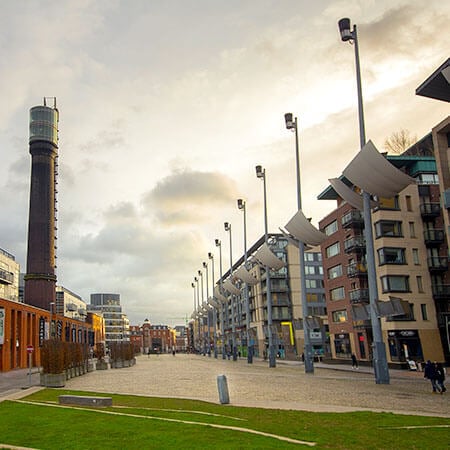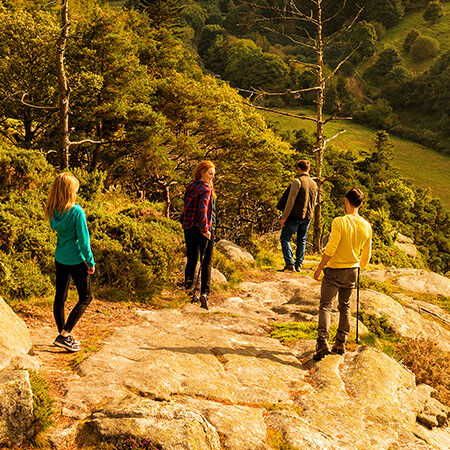Dublin-born icon, James Joyce once said: “When I die Dublin will be written in my heart”. Although he left Ireland, he never stopped writing about the city and its colourful characters.
The people of Dublin
The biggest draw to Dublin has to be its people. They’re the reason why the city is consistently voted among the friendliest in Europe – and the world. They’re also the driving force behind Dublin’s distinctive nightlife, its vibrant arts scene and the city’s many community initiatives.
Dubliners are known for their well-meaning, but wicked, tongue-in-cheek humour. So expect some gentle teasing to accompany your invite to the local pub.
Dublin is relatively small with a population of around 1.45 million. Roughly 17% of these people hail from overseas, so you should settle in no matter where you’re from. (You can read more about diversity in Dublin here.)

Phoenix Park Dublin in Autumn
A love of art and history
The city also has a spectacularly rich history, teeming with grand architecture and internationally renowned museums. Walking around the city centre, you’ll get to see picture-perfect Georgian townhouses, classical Edwardian facades and picturesque Victorian parks. The city is even home to a museum of a museum. Featuring exotic taxidermy and huge whale skeletons, Dublin’s ‘Dead Zoo’ of natural history hasn’t changed much since Victorian times.
In terms of art, Dublin has a diverse range of collections on display across its many galleries. You can also view the National Museum’s 5,000 year old bog bodies, take your family on a Viking experience at Dublinia or check out Strongbow’s tomb at Dublin’s diverse cultural attractions.
Even the city suburbs are steeped with history. Historical sites like Drimnagh Castle are well worth leaving the city centre for.
Music, drama and literature
Dublin has produced many world-famous musicians, including U2, Thin Lizzy and Sinéad O’Connor. It has also been called home by Nobel-winning writers like George Bernard Shaw, Samuel Beckett and W.B. Yeats. Today, their creative legacies remain painted across the city.
So how does this impact the people of Dublin? Well, firstly, you’ll see many monuments dedicated to these icons as you stroll the city streets.
Along the banks of the Grand Canal, you can sit down beside the bronze form of Patrick Kavanagh and watch the same scenes that inspired his poetry. While, just off Grafton Street, you can raise a glass to the legendary Phil Lynott beside the bar where he began to gig.
Dublin is also a UNESCO City of Literature and hosts over half a dozen book festivals, as well as the internationally prestigious Dublin Literary Award. A new world-class city library is on its way too.
Dublin’s venues
Dublin is home to music and comedy venues of every shape and size. From the cosy upstairs room in Whelan’s pub through to the 13,000-capacity 3Arena, there’s something to suit every artist and audience member.
Recently, Ireland’s capital city has produced internationally popular acts like Kodaline, Gavin James and Pillow Queens. But it has plenty of pioneering hip-hop artists and gifted traditional musicians too.

The Gate Theatre auditorium
There’s plenty of theatres dotted around the heart of the city too. The Abbey, The Gate and The Olympia have all been around for the best part of a century. While new theatres like the Smock Alley, the New Theatre, the Bord Gáis and the Pavilion have increased the city’s capacity to nurture creatives.
Dublin’s festivals
You won’t want to miss out on Dublin’s diverse range of festivals either.
In March, the annual St Patrick’s Festival fills the streets with a flurry of colour, kickstarting the festival season. After that, you can enjoy the entertainment on offer at Bloom, Dublin Pride, the theatre festival, the gay theatre festival, TradFest, Bloomsday, the fringe fest and Dublin’s international film festival. For a full calendar of annual events, check out our guide to Dublin festivals.
With plenty of free and paid events happening throughout the year, you’ll never be stuck for choice. For more information on how to get the most out of Dublin, check out what’s on in the coming weeks.





